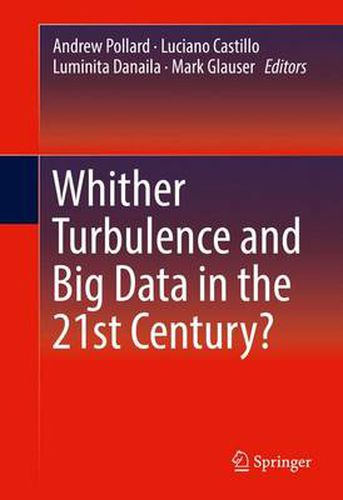Readings Newsletter
Become a Readings Member to make your shopping experience even easier.
Sign in or sign up for free!
You’re not far away from qualifying for FREE standard shipping within Australia
You’ve qualified for FREE standard shipping within Australia
The cart is loading…






This title is printed to order. This book may have been self-published. If so, we cannot guarantee the quality of the content. In the main most books will have gone through the editing process however some may not. We therefore suggest that you be aware of this before ordering this book. If in doubt check either the author or publisher’s details as we are unable to accept any returns unless they are faulty. Please contact us if you have any questions.
This volume provides a snapshot of the current and future trends in turbulence research across a range of disciplines. It provides an overview of the key challenges that face scientific and engineering communities in the context of huge databases of turbulence information currently being generated, yet poorly mined. These challenges include coherent structures and their control, wall turbulence and control, multi-scale turbulence, the impact of turbulence on energy generation and turbulence data manipulation strategies. The motivation for this volume is to assist the reader to make physical sense of these data deluges so as to inform both the research community as well as to advance practical outcomes from what is learned. Outcomes presented in this collection provide industry with information that impacts their activities, such as minimizing impact of wind farms, opportunities for understanding large scale wind events and large eddy simulation of the hydrodynamics of bays and lakes thereby increasing energy efficiencies, and minimizing emissions and noise from jet engines.
Elucidates established, contemporary, and novel aspects of fluid turbulence - a ubiquitous yet poorly understood phenomena;
Explores computer simulation of turbulence in the context of the emerging, unprecedented profusion of experimental data,which will need to be stewarded and archived;
Examines a compendium of problems and issues that investigators can use to help formulate new promising research ideas;
Makes the case for why funding agencies and scientists around the world need to lead a global effort to establish and steward large stores of turbulence data, rather than leaving them to individual researchers.
$9.00 standard shipping within Australia
FREE standard shipping within Australia for orders over $100.00
Express & International shipping calculated at checkout
This title is printed to order. This book may have been self-published. If so, we cannot guarantee the quality of the content. In the main most books will have gone through the editing process however some may not. We therefore suggest that you be aware of this before ordering this book. If in doubt check either the author or publisher’s details as we are unable to accept any returns unless they are faulty. Please contact us if you have any questions.
This volume provides a snapshot of the current and future trends in turbulence research across a range of disciplines. It provides an overview of the key challenges that face scientific and engineering communities in the context of huge databases of turbulence information currently being generated, yet poorly mined. These challenges include coherent structures and their control, wall turbulence and control, multi-scale turbulence, the impact of turbulence on energy generation and turbulence data manipulation strategies. The motivation for this volume is to assist the reader to make physical sense of these data deluges so as to inform both the research community as well as to advance practical outcomes from what is learned. Outcomes presented in this collection provide industry with information that impacts their activities, such as minimizing impact of wind farms, opportunities for understanding large scale wind events and large eddy simulation of the hydrodynamics of bays and lakes thereby increasing energy efficiencies, and minimizing emissions and noise from jet engines.
Elucidates established, contemporary, and novel aspects of fluid turbulence - a ubiquitous yet poorly understood phenomena;
Explores computer simulation of turbulence in the context of the emerging, unprecedented profusion of experimental data,which will need to be stewarded and archived;
Examines a compendium of problems and issues that investigators can use to help formulate new promising research ideas;
Makes the case for why funding agencies and scientists around the world need to lead a global effort to establish and steward large stores of turbulence data, rather than leaving them to individual researchers.